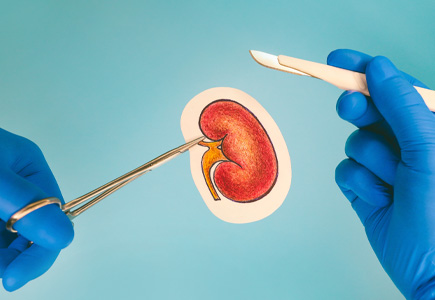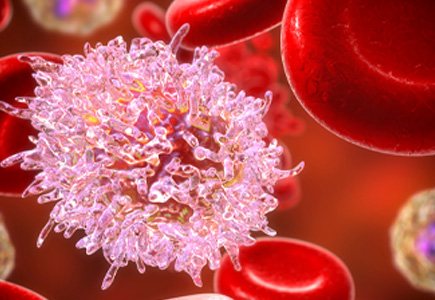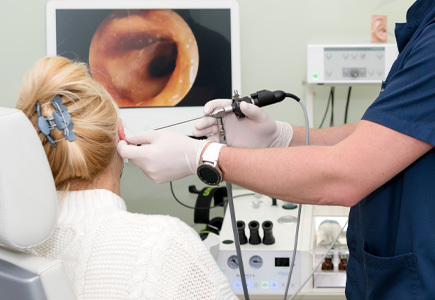Bone Marrow Transplant (BMT) is a medical procedure that replaces damaged or diseased bone marrow with healthy stem
cells to treat various conditions, including leukemia, lymphoma, and certain genetic disorders. The process involves
harvesting stem cells from the patient or a donor, conditioning the recipient's body, and then infusing the healthy
cells. BMT aims to restore the production of normal blood cells, providing a potential cure for certain diseases and
disorders affecting the bone marrow and blood.
Types of Bone Marrow Transplants:
- Autologous Transplant: In an autologous transplant, the patient's stem cells are harvested, often before
undergoing intensive chemotherapy or radiation therapy. After the cancer treatment, the preserved stem cells are
returned to the patient, aiding in the recovery of the bone marrow.
- Allogeneic Transplant: In an allogeneic transplant, stem cells are obtained from a donor, typically a
family member or unrelated donor with a close genetic match. This type of transplant is often used for
conditions where the patient's stem cells are affected or in certain genetic disorders.
What To Expect From Bone Marrow Transplant Treatment?
Below is a step-by-step guide to ensuring patients are equipped for a successful and transformative transplant
experience.
- Pre-Transplant Evaluation: Before the transplant, a comprehensive evaluation is conducted to assess the
patient's overall health, including heart, lung, and kidney function. Blood tests, imaging studies, and a bone
marrow biopsy may be performed to determine the extent of the disease and the suitability for a transplant.
- Conditioning Treatment: For both autologous and allogeneic transplants, patients typically undergo a
conditioning treatment, which involves high-dose chemotherapy and, in some cases, total body irradiation. This
treatment aims to eliminate the existing bone marrow to make way for the new stem cells.
- Stem Cell Infusion: The actual transplant involves the infusion of stem cells into the patient's
bloodstream. This process is similar to receiving a blood transfusion. The transplanted stem cells then migrate
to the bone marrow, where they begin to produce new blood cells.
- Engraftment: Engraftment refers to the process where the transplanted stem cells start to grow and
produce new blood cells in the patient's bone marrow. This period is closely monitored to ensure the successful
integration of the donor cells.
- Recovery and Follow-Up: After the transplant, patients enter a critical phase of recovery. They are
monitored for complications, and supportive care is provided to manage side effects such as infections,
graft-versus-host disease (in allogeneic transplants), and other potential complications. Regular follow-up
appointments are essential to track progress and address any issues.
How To Prepare For The Treatment?
Preparing for a bone marrow transplant involves several steps as below to ensure the best possible outcome:
- Undergo Comprehensive Medical Evaluation: Before the transplant, patients will undergo a thorough medical
evaluation. This includes physical examinations, blood tests, imaging studies, and other diagnostic procedures
to assess overall health and determine the suitability for a transplant.
- Build a Support System: Having a strong support system is crucial during and after the transplant. This
includes family, friends, and healthcare professionals who can provide emotional support, assistance with daily
activities, and help navigate the challenges of the recovery process.
- Educate Yourself: It's essential for patients and their families to educate themselves about the
transplant process, potential risks, and expected outcomes. This knowledge empowers individuals to participate
in decision-making and adhere to post-transplant care guidelines.
- Follow Pre-Transplant Guidelines: Patients will receive specific guidelines to follow before the transplant, such as dietary restrictions, medications, and lifestyle modifications. Adhering to these guidelines helps optimize the success of the transplant and minimizes potential complications.
- Plan for Post-Transplant Care: Planning for the post-transplant phase is crucial. This includes arranging for transportation to and from medical appointments, ensuring a clean and safe home environment, and preparing for potential side effects and complications.
Significance Of Bone Marrow Transplant
Here's the significance of the treatment:
- Potential for Cure: For certain conditions, especially hematologic malignancies, a successful bone marrow
transplant can offer the potential for a cure, eliminating the disease and preventing its recurrence.
- Restoration of Normal Blood Cell Production: Bone marrow transplants aim to rejuvenate the bone marrow, enabling the production of healthy blood cells. This is particularly beneficial for individuals with disorders affecting blood cell quality and quantity.
- Extended Life Expectancy: Successful bone marrow transplants can significantly extend life expectancy,
especially for conditions that would otherwise have a poor prognosis.
- Improved Quality of Life: Bone marrow transplants can enhance the quality of life for patients by relieving symptoms, reducing the need for ongoing treatments, and providing a chance for a healthier future.
- Potential Graft-versus-Leukemia Effect: In allogeneic transplants, there is a potential graft-versus-leukemia (GVL) effect, where the donor's immune cells attack and eliminate any remaining cancer in the recipient's body, reducing the risk of disease recurrence.
Conclusion
Bone marrow transplants represent a beacon of hope for individuals facing serious blood disorders and cancers. By
understanding what to expect and preparing effectively for the transplant process, patients and their families can
actively contribute to the success of the treatment. The benefits extend beyond potential cures, including the
restoration of normal blood cell production, extended life expectancy, and an improved quality of life. The journey
may be challenging, but with a well-informed and supportive approach, bone marrow transplants offer the promise of a
renewed and healthier future.



























